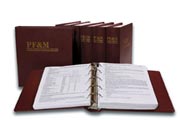 |
 |
 |
|
PF&M AT A GLANCE Alternative risk transfer Paraphrasing an old adage—“to a person with a hammer, everything is a nail”— many insurance professionals tend to operate with a similar approach to handling exposures to loss or risk. The typical response is to look for an insurance form that fits the type of possible loss. The search generally takes place in the traditional insurance market. The typical backup response when an initial search fails is to look harder for an insurance solution—now trying the excess or surplus market. If that is unsuccessful, some insurance people give up. However, fortunately, more insurance people now actively seek alternatives to traditional methods. An expert in any given area, even insurance, often views the surrounding world through a form of myopia. What one works with tends to re-shape how everything else is perceived. Therefore, insurance people who, in the past, have (and those who still do) tried to handle risk strictly through traditional insurance products should be forgiven. However, it no longer makes sense for any person to continue to be unaware that there are many, viable non-insurance methods to address personal and commercial loss exposures. Alternative Risk Transfer (ART) is a term that is used to refer to a host of methods to address the risk of loss. It may be more accurate to say that it applies to methods that are not traditional insurance methods, rather than non-insurance methods. While some ART methods do not use insurance, others involve either some combination of insurance and non-insurance features or use concepts that are very similar to insurance. Although developments began decades ago, it has just been in the last 15 to 20 years that there has been a substantial, sustained movement towards permanent alternatives to insurance. In most instances, the original shift was caused by extremely hard markets or as a last resort for certain types of coverage that were rarely—or never—available through traditional markets. Consider parties who form groups involved in the same practice or operation such as medical malpractice liability risk retention groups, or a group of news publication publishers that form a pool to handle their personal injury liability (such as libel and slander lawsuits). Today, further developments are in response to several trends, including the increased savvy of insurance consumers and agents, technological advancements, moves toward combined (convergent) products and markets, and the popularity of the enterprise risk management concept. Insurance consumers are now often likely to scrutinize their return on dollars that used to routinely go to insurers. Now, certain customers may look to mitigate or hedge their chance of suffering a loss. Examples include creating business contracts that shift the chance of loss to other parties and arranging reciprocal, emergency use of excess production capacity or operating facilities. Another example may be to retain a high, primary level of a given type of risk and then independently arrange for excess insurance. Please note that this is only an overview of this subject. Discussions of several alternative risk-handling topics may be found in the PF&M Analysis from The Rough Notes Company. Agency OnLine subscribers, please refer to our sections dealing with Alternative Risk Transfer for more details. * |
|
|||||||||||||
| ||||||||||||||
